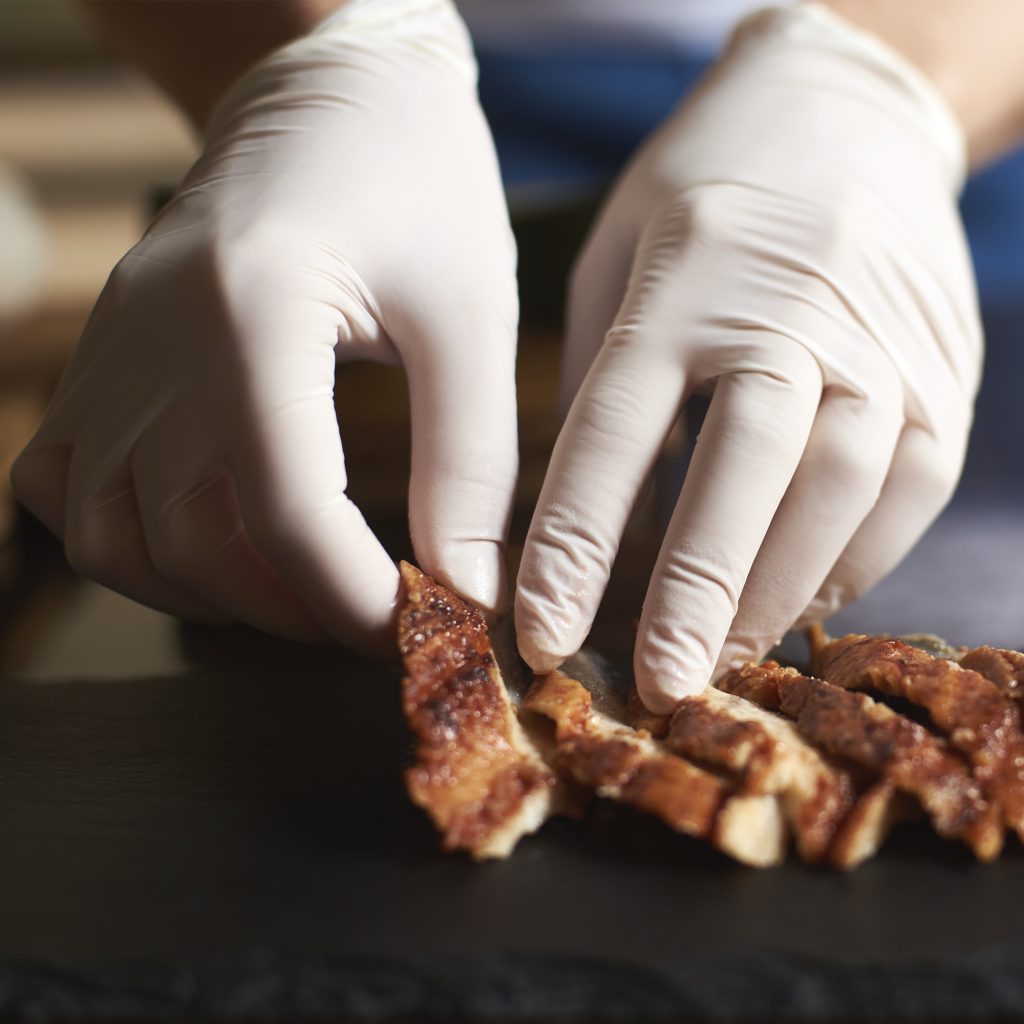Tip: Start typing in the input box for immediate search results.
-
Food Safety
-
Tools and Resources
-
Product Tips
-
Product Features & Benefits
-
Product Information
- Differences Between High and Low Density Bags
- Type of Disposable Glove Substrates
- What is the difference of an Ovenable Pan Liner and a Steam Pan Liner
- Cook Chill Bag
- Difference between High and Low Density Reclosable Bags
- Choosing the right option for Foodservice Apparel
- Differences between Bamboo, Wood and Plastic Expendables
-
Product Downloads
Type of Disposable Glove Substrates
In the foodservice industry, maintaining proper hygiene and safety standards is paramount. Disposable gloves are an essential component in ensuring food handling practices meet regulatory requirements and prevent cross-contamination. Among the most commonly used types are latex, nitrile, and vinyl gloves. Each type offers unique benefits and considerations, catering to various preferences and needs within the industry.
Understanding the differences between these gloves is crucial for selecting the most suitable option for specific tasks and ensuring optimal food safety practices in foodservice establishments.
1 Nitrile Disposable Gloves (NIT)
Nitrile disposable gloves are made from synthetic rubber and are latex-free, making them suitable for individuals with latex allergies. They offer excellent puncture resistance, durability, and chemical resistance, making them ideal for handling food with acidic or fatty properties. Nitrile gloves also provide good tactile sensitivity and fit.

2 Latex Disposable Gloves (LTX)
Latex disposable gloves are made from natural rubber latex and provide excellent elasticity, fit, and comfort. They offer good tactile sensitivity, making them suitable for tasks that require precision. However, some individuals may have latex allergies, so alternative glove types are preferred for them.
3 Vitrile Disposable Gloves (VTR)
Vinyl-like Properties: Like vinyl gloves, Vitrile disposable gloves may offer a smooth surface and good comfort for users. They may also be latex-free, making them suitable for individuals with latex allergies.
Nitrile-like Properties: Similar to nitrile gloves, vitrile gloves may provide enhanced strength, puncture resistance, and durability compared to traditional vinyl gloves. They may also offer better chemical resistance, making them suitable for handling a wider range of food types.
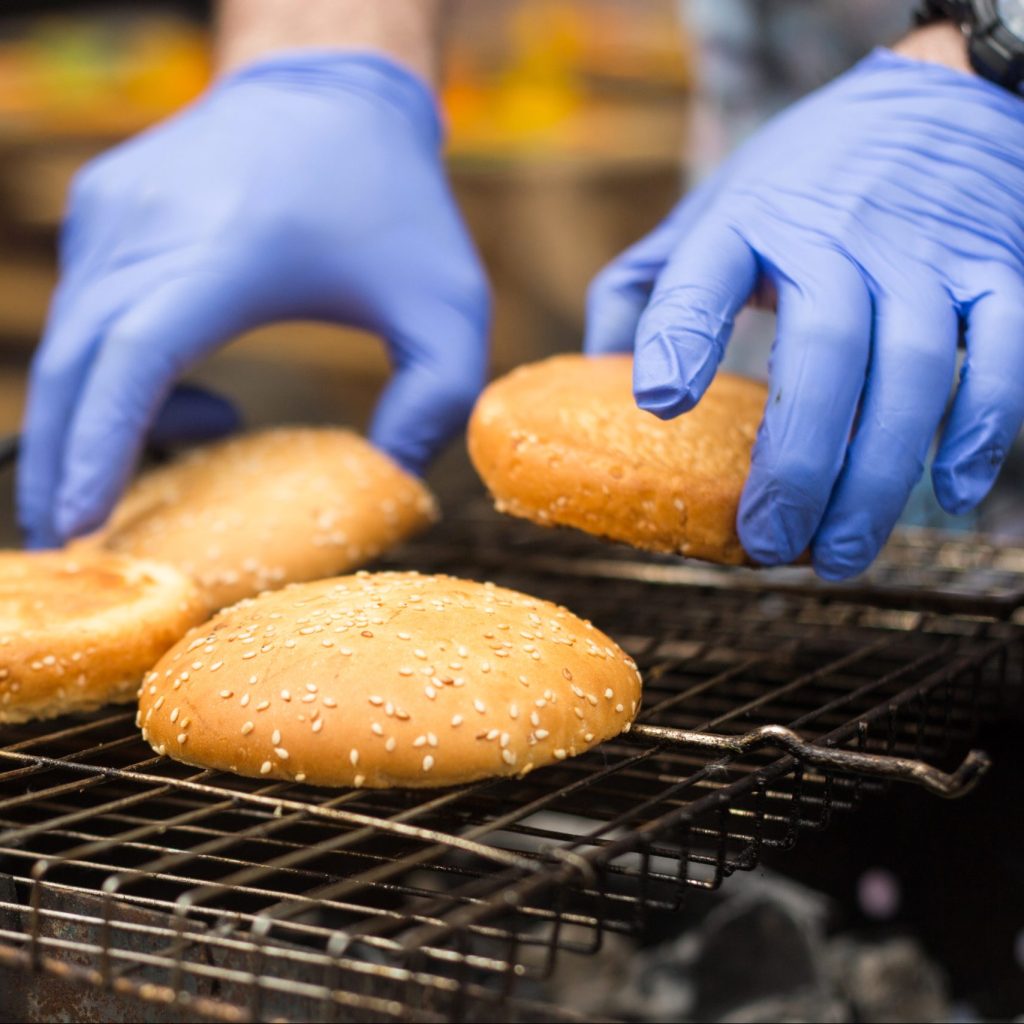
4 Synthetic Disposable Gloves (SYN)
Synthetic disposable gloves are a type of glove that is made from synthetic materials rather than natural rubber latex. These gloves are designed for use in food handling and preparation tasks in various food service settings such as restaurants, catering businesses, and food processing facilities. Synthetic gloves are often preferred for food service applications due to their durability, versatility, and hypoallergenic properties.
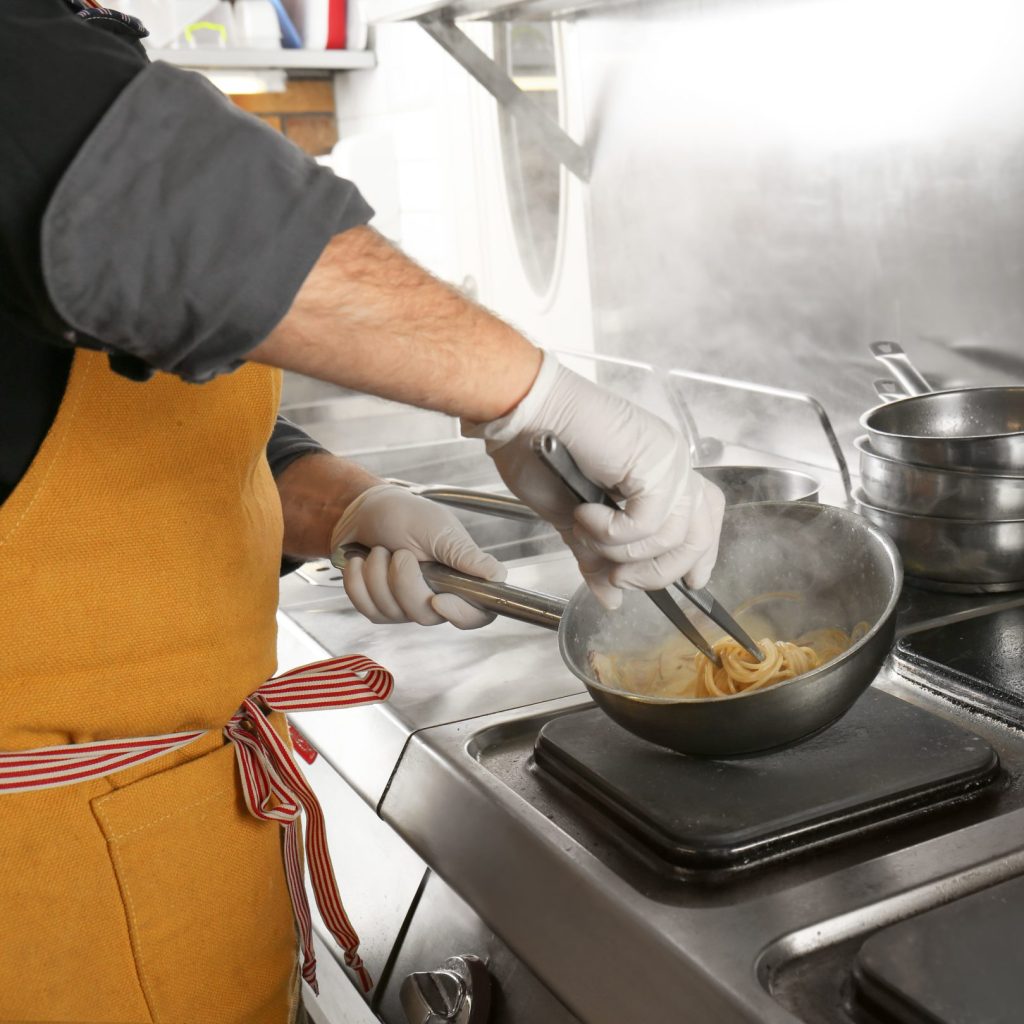
5 Vinyl Disposable Gloves (PVC)
Vinyl disposable gloves are made from PVC (poly vinyl chloride) and are latex-free, making them suitable for individuals with latex allergies. They are economical and offer basic protection for food handling tasks.
However, they are less durable and offer less dexterity compared to other types of gloves.
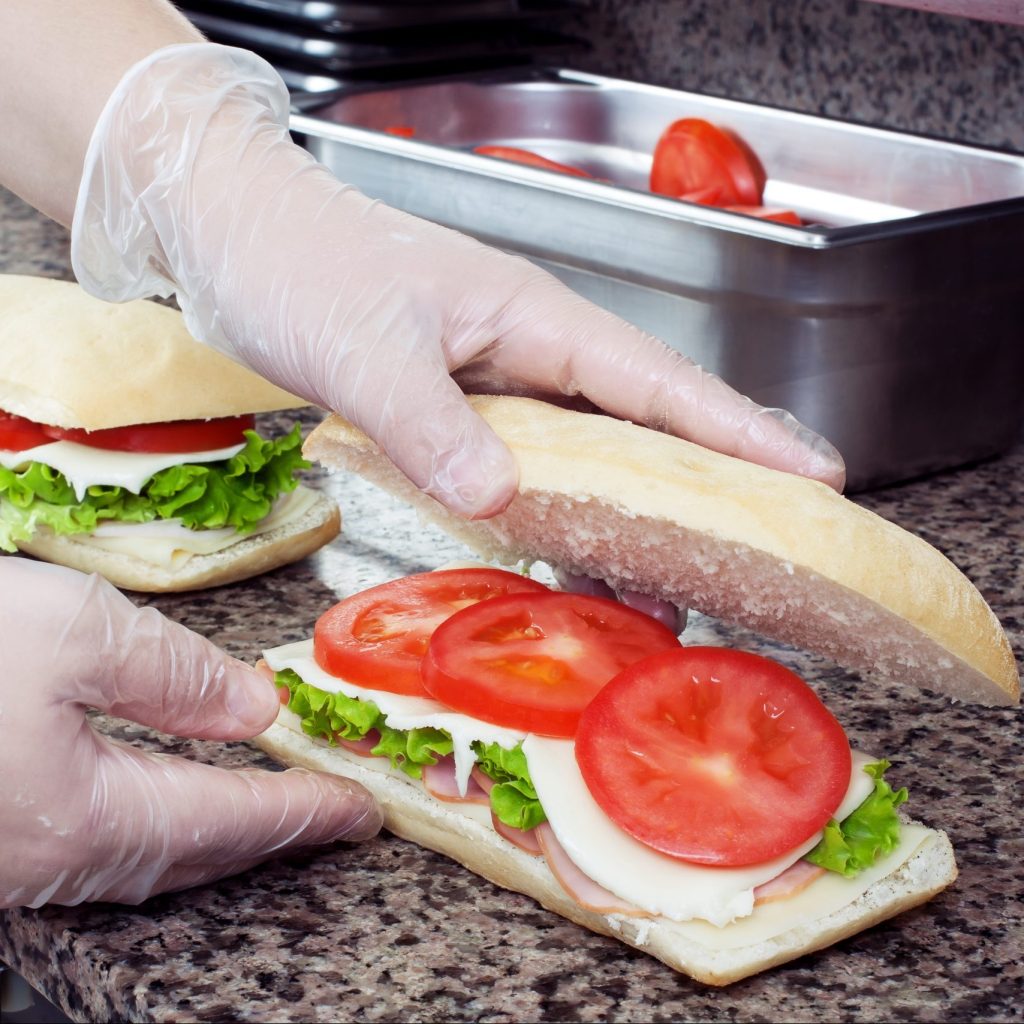
6 Compostable Gloves (COMPST)
Compostable disposable gloves are our eco-friendly solution for food service establishments crafted with sustainability in mind, these gloves offer reliable protection for food handling tasks while reducing environmental impact. Made from plant-based materials, our compostable gloves are designed to break down naturally, leaving behind zero harmful residues. They provide a guilt-free alternative to traditional disposable gloves, ensuring that your business aligns with eco-conscious practices.
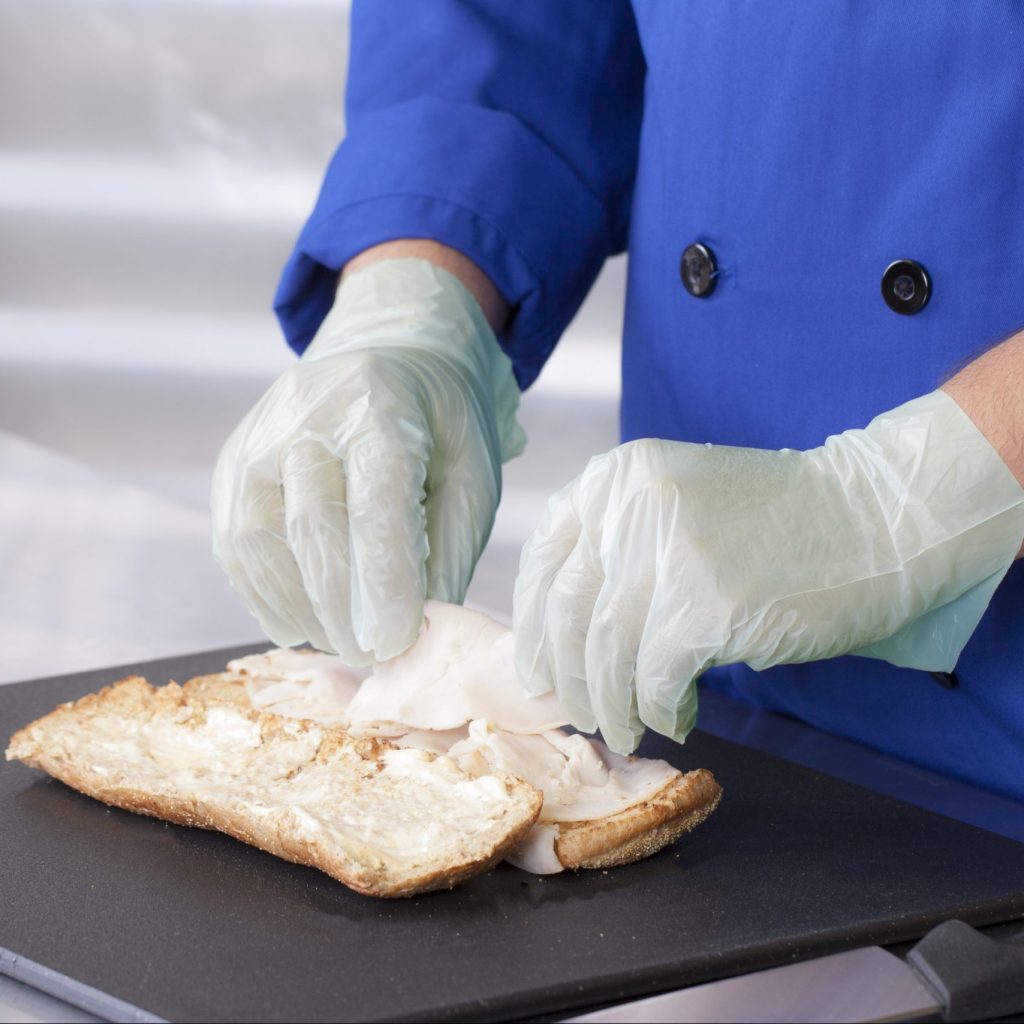
7 Hybrid Disposable Gloves (HYBD)
Hybrid disposable gloves are a combination of polyethylene and other materials, offering a balance between cost-effectiveness and durability. They provide better strength and puncture resistance compared to traditional polyethylene gloves.

8 Polyethylene Disposable Gloves (OEG)
Polyethylene disposable gloves are lightweight and inexpensive. They are commonly used for tasks that require frequent glove changes, such as food handling in delis, sandwich shops, or food trucks. Polyethylene gloves offer minimal protection and are best suited for low-risk food handling tasks.
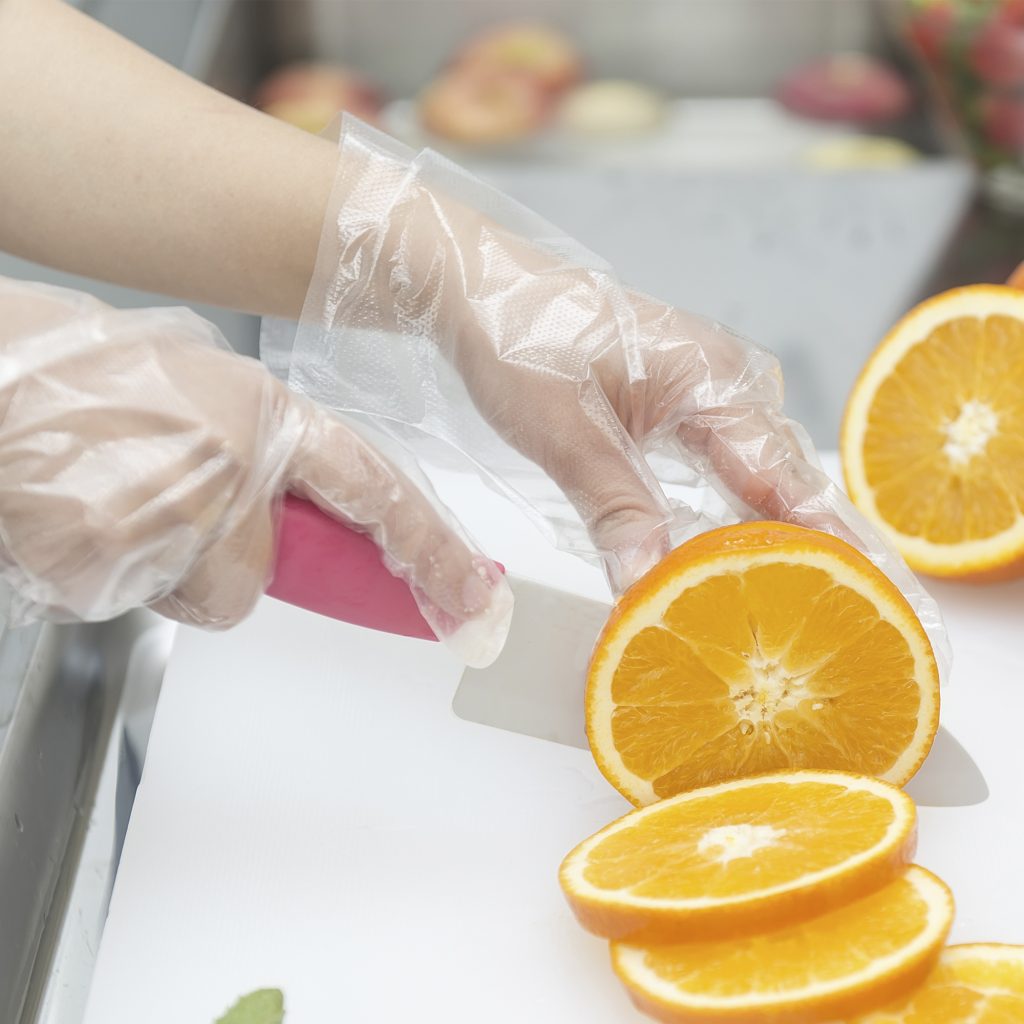
Disposable gloves may come powdered or powder-free. Powdered gloves are lubricated with cornstarch or other powders to make them easier to put on and take off. However, powder-free gloves are preferred in food handling to avoid contamination issues.
